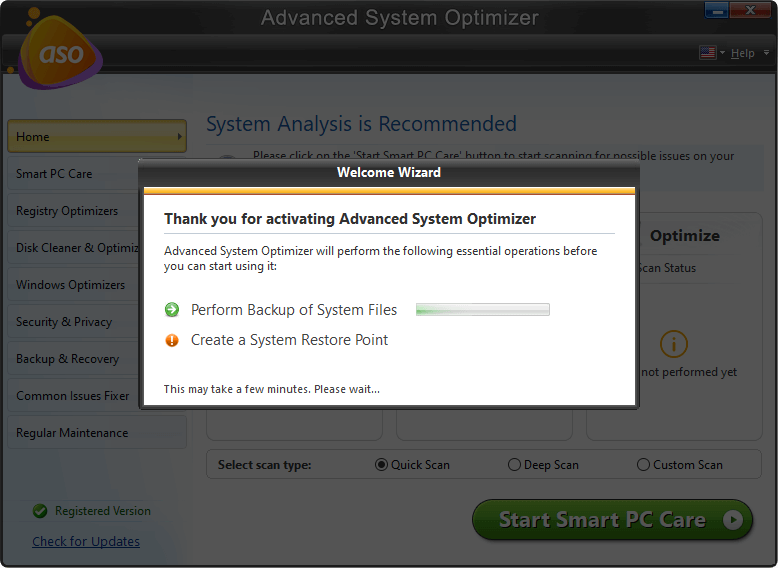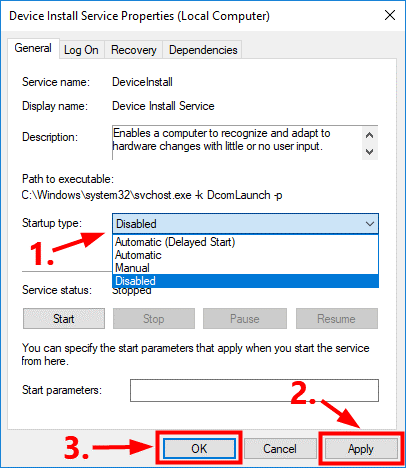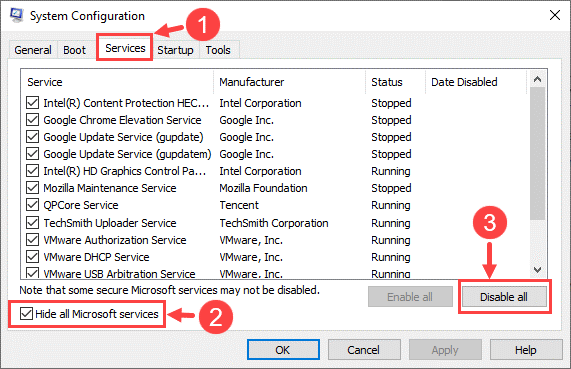Slow or lagging system performance is the most common problem faced by Windows 10 users. And when this happens, the first thing we do is check the CPU usage via Task Manager. While doing so, if you find that it is nearing 100% due to a file named WUDFHost.exe, what will you do?
Don’t have an answer? Worry not many Windows users have reported facing the problem due to WUDFHost.exe; hence we are here with the solution.
Here, in this post, we will discuss how to fix CPU hogging caused by the WUDFHost process.
What is WUDFHost.exe?
WUDFHost stands for Windows User-mode Driver Framework Host, and it is a legitimate Windows system process, important for the operating system. However, if you see it consuming more than 80% CPU power and wants to kill it, it is not recommended. Doing so might disrupt the system’s functioning.
However, if this process is slowing down the system and restricting the functioning, this post is for you. We will help fix the WUDFHost problem.
7 Ways to Troubleshoot wudfhost.exe High CPU usage Windows 10
Here we will enlist 7 workable solutions to fix excessive CPU Usage caused by WUDFHost.exe. Just work your way down and find the right solution for you that helps get rid of the Windows User-mode Driver Framework Host problem.
Fix 1 – Scan system for malware infections
Fix 2 – Update outdated & corrupt device, drivers
Fix 3 – Disable Intel Wireless Gigabit 17265 User mode driver
Fix 5 – Disable portable devices
Fix 6 – Scan system file for errors
Fix 8 – Switch Off Windows Media Player Backup/ Sync
Fix 1: Scan system for malware infections
WUDFHost.exe is a genuine Windows process, and it is safe to use, however sometimes treacherous malware or viruses hide as WUDFHost process. Therefore, to determine if the WUDFHost.exe running is genuine or not, we should know the file location.
A genuine WUDFHost.exe file is in the C:\Windows\System32 folder; however, if you find that the file running is saved at some other location, it can be a threat.
 Additional Tip
Additional Tip
Tip: To check the file location, open Task Manager by pressing Ctrl+Shift+Esc. Look for WUDFHost.exe process > right-click > open file location. Here you can see the path where the file is saved.
In such a case, scanning the system for malware infections is a must. For this, we suggest using the System Protector module offered by Advanced System Optimizer.
You must be thinking, why use a module when you can use a dedicated antivirus tool, right?
If a dedicated antivirus software only scans the system for infections, the best system optimizer, and a cleanup tool like Advanced System Optimizer will perform different operations.
Using this cleaning utility, you can scan the system for junk files, update drivers, fix registry errors, and do a lot more.
To use System Protector, follow the steps below:
1. Download, install and launch Advanced System Optimizer.

2. Click Security & Privacy > System Protector
3. To perform the scan, click Start Scan. For thoroughly scanning the Windows system, we suggest performing Deep Scan.
4. Once the scan is completed, fix all the errors, and restart the system.
Now check if the WUDFHost.exe process is still running or not.
If the problem persists, move to the next fix.
Read More: Comprehensive Review Advanced System Optimizer
Fix 2: Update outdated & corrupt device, drivers
If the WUDFHost.exe process is genuine, then the High CPU Usage could result from a corrupted or outdated driver. To fix this, updating device drivers is recommended. You can do it the traditional way via Device Manager or can do it automatically via Driver Updater.
Note: If you update drivers manually, you need to gather information like version number, the bit of operation system, device driver model number, and other details. If you want to save yourself from all this, try updating drivers automatically.
Driver Updater, the module offered by Advanced System Optimizer, is an automatic, simple, and effective way to update drives. To use it for updating drivers, you don’t need to collect any system information; all you need to do is follow the steps below:
1) Download, install and run Advanced System Optimizer
2) Click Regular Maintenance > Driver Updater
3) Click Start Scan Now to begin the scanning process.
4) Once the scan is done, update all the outdated drivers.
(to update all drivers at once, you need the Pro version of Advanced System Optimizer).
5) Restart the system to save changes.
6) Now check the CPU usage percentage; it should have come down. If that’s the case, congratulations, the WUDFHost.exe hogging issue is fixed. If not, read further.
Fix 3: Disable Intel Wireless Gigabit 17265 User mode driver
It seems the above 2 steps haven’t helped, worry not by disabling the Intel Wireless Gigabit User-mode driver; you can fix this problem like other Windows users. To do so, follow the steps below:
1) Press Windows + R
2) Type devmgmt.msc in Run window > OK.

3) Locate Intel Wireless Gigabit Drivers > expand it > right-click Intel Wireless Gigabit User Mode Driver > Disable device > confirm the action.

4) Once disabled, the High CPU usage problem caused due to WUDFHost.exe must be resolved. To check, press Ctrl+Shift+Esc and look for the WUDFHost.exe hogging issue.
If you see reduced CPU usage, then the issue should be resolved.
Note: If you use 5G networks and 2.4G, then disabling User Mode Driver will not affect the connection. However, if you want to update it, use Driver Updater and check if updated drivers help resolve the issue.
Fix 4: Turn Off NFC
Sometimes NFC also causes WUDFHost.exe High CPU usage. So, if you have NFC disable and resolve slow PC issues caused by WUDFHost.exe. To do so, follow the steps below:
1) Press Windows + I > Network & Internet.

2) Select Airplane mode > toggle the button from right to left and disable NFC under Wireless devices.

3) Now, check the CPU usage, if it turns to be normal, hooray, the problem is solved. If not, move to the next step.
Fix 5: Disable portable devices
To check if a portable device causes the problem, follow the steps below:
1) Press Windows + R > type devmgmt.msc > OK.
2) Navigate to Portable Devices and expand the list.
3) Select the device > right-click > Disable device > confirm it.

Note: Doing so will not interfere with the working of portable devices.
5) Now check if the % has gone down or not. This should resolve the WUDFHost.exe High CPU problem. If not, try disabling Device Install Service.To do so, follow the steps below:
Note: Disabling this service might interfere with the system process and will not automatically install portable devices. Hence, if you are okay with it, only then disable the device install service.
1) Press Windows key + R. Type services.msc > ok

2) Look for Device Install Service > double-click

3) Click the downward arrow next to Startup type > Disabled > Apply > OK.

4) Now check if the 100% CPU problem is resolved or not.
If it is reduced, the problem is solved; else, move to the next fix.
Fix 6: Check system file for errors
When system files get corrupt, then too, you might face WUDFHost.exe process high CPU problems. To fix this, we suggest running Windows in-built utility System file checker (sfc).
1. To do so, press Windows + X
2. Select Windows PowerShell (Admin)
3. Now enter SFC /scannow and hit Enter key
Note: there’s a space between sfc and /)
4. Let the command run. This will fix corrupt and missing system files.

This should fix WUDFHost.exe’s high CPU resources consumption problem.
Fix 7 – Perform a Clean boot
If the above fixes didn’t help, try performing a clean boot. To do so, follow the steps below:
1. Press Windows + R
2. Type in msconfig> ok

3.In the new window that opens, click the Services tab and select the box next to Hide all Microsoft services box > Disable.

4. Next, click Startup tab > Open Task Manager > click Startup tab, right-click each program and click > Disable
5. Do it till all programs are disabled.

6. Exit Task Manager
7. Click System Configuration>Apply > OK.
8. Restart the system and once restarted check the CPU usage caused due to WUDFHost.exe should be resolved. If this has fixed the problem, try identifying the app that was creating the problem.
9. Follow all the above steps, disable Hide Microsoft Services > disable and then select each program to disable it one by one. Restart PC after disabling each app and find the program that was creating the problem.
This way, you can resolve the WUDFHost.exe problem on Windows 10. Do let us know which fix worked for you in the comments section below.
Fix 8 – Switch Off Windows Media Player Backup/ Sync
Sometimes when an external drive is attached while Windows Media Player is running, you might encounter high CPU usage. In that case, you can try disabling Windows Media Player Backup/ Sync and here are the steps for the same –
1. In the Windows search bar, type Windows Media Player and open it.
2. Click on Organize and then click on Options.

3. Click on the Devices tab and click on the removable device.
4. Click on Properties.

5. Uncheck the checkbox that says Create folder hierarchy on device.
6. Click on Apply and then OK
Restart your computer and check if the issue has been resolved or not.
FAQ –
What is WUDFHost.exe?
WUDFHost.exe is a legitimate Windows User-mode Driver Framework Host file that is important for Windows operating systems.
What does WUDFHost.exe do?
WUDFHost.exe is a process that provides better stability to external devices like sensors, portable devices, etc.
Can I delete WUDFHost.exe?
We do not recommend deleting or disabling WUDFHost.exe, as doing so might interfere with the Windows operating system’s working.



 Subscribe Now & Never Miss The Latest Tech Updates!
Subscribe Now & Never Miss The Latest Tech Updates!